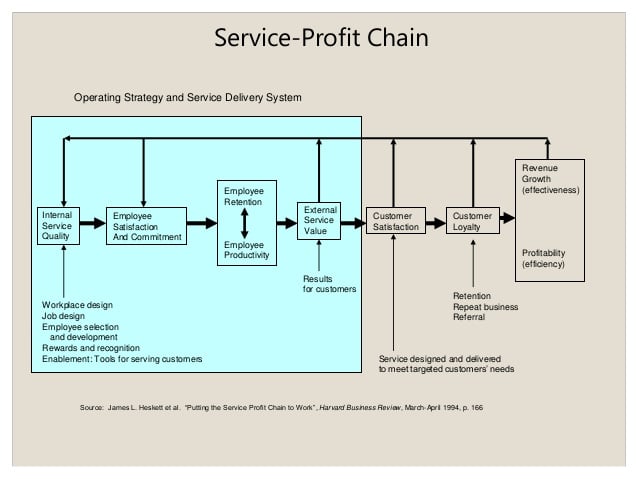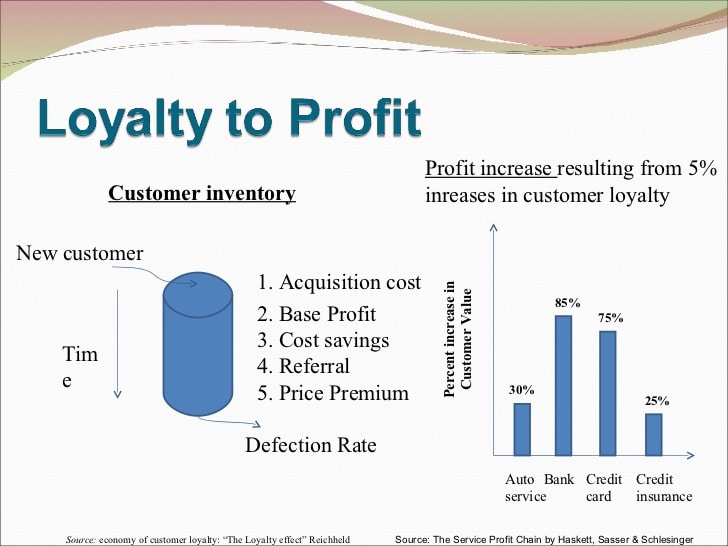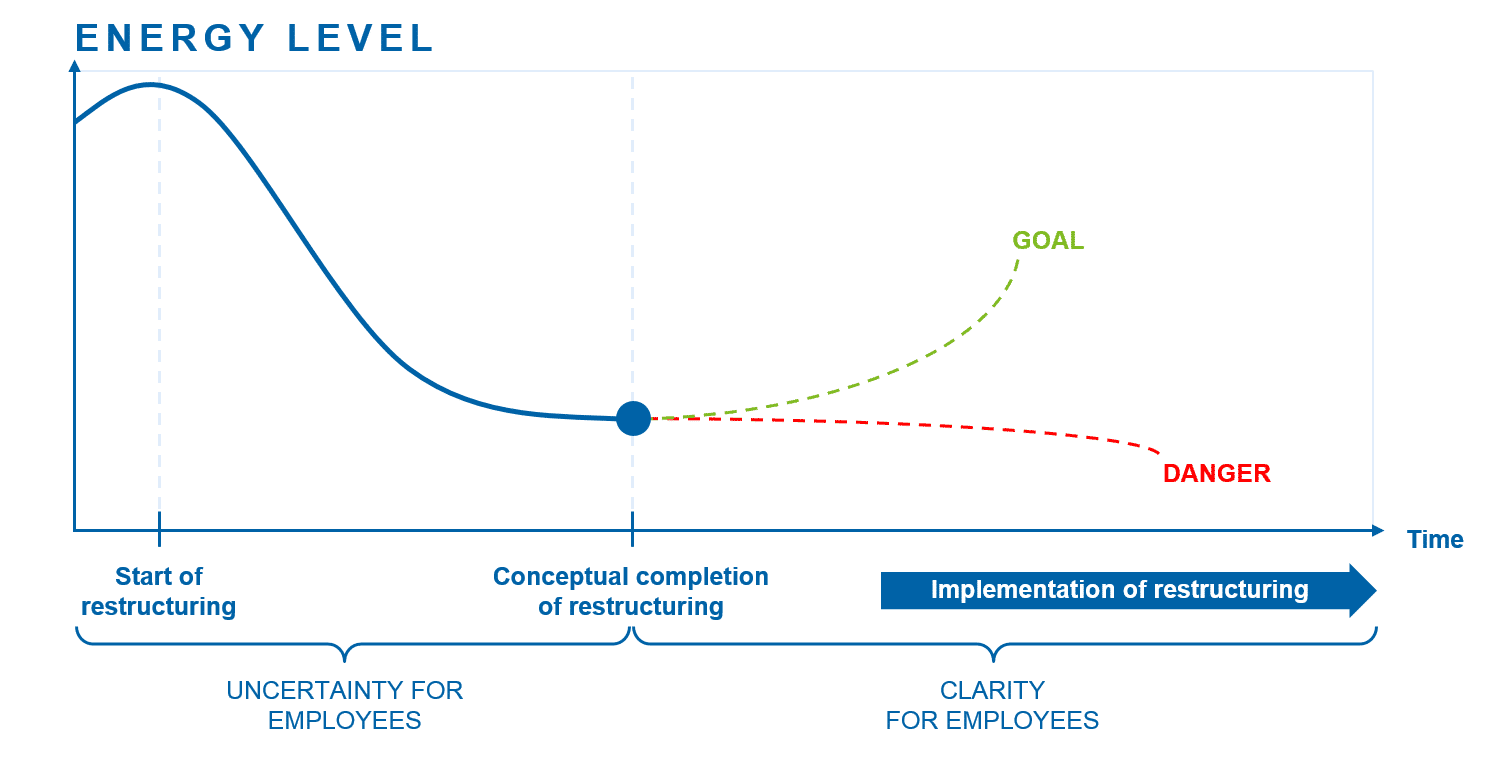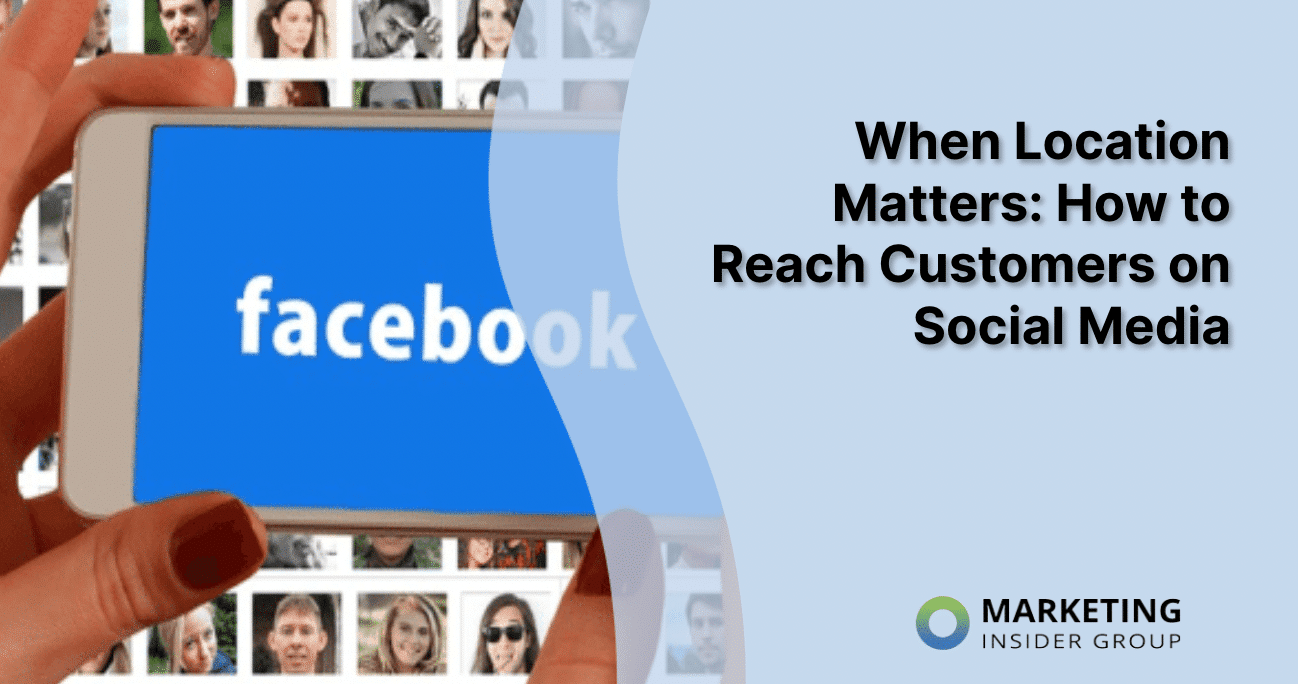
The Service Profit Chain – Why Employee Engagement Matters
When you master the concept of the service profit chain, you can unlock the secret to higher profits. This groundbreaking idea shows the irrefutable link between employee satisfaction, customer loyalty, and ultimately, profits.
If you haven’t read the book of the same name yet, put it on your must-read list for this spring. The Service Profit Chain is an idea whose time has come.
Back in the days of parachute pants and the Hammer, a new idea burst forth from a handful of Harvard Business School professors. Before you toss it into the pile marked “Ivory-tower ideas that have no practical application,” think again. This principle has never been more important than today.
Here’s why.
In today’s marketing climate, it’s a given that marketing must be customer-centric. Using powerful data analytics, we work hard to reach the right people with the right message at the right time.
We hire content marketing agencies to create these messages—each in just the right form that appeals to our target customer base. We hire web and application developers to create a seamless experience—for our customers.
But with all this emphasis on the customer online, have we neglected the most important user experience of all—your customers’ interaction with your employees?
Quick Takeaways:
- When employee satisfaction rises, so does customer satisfaction.
- Use social media to listen to and make conversation with your employees, just as you would do with customers.
- Employee satisfaction should be an indicator of management performance.
- Employees shouldn’t be afraid of sharing their thoughts on social media.
The Service Profit Chain Takes Customer-Centric Marketing to New Heights
How do we build the kinds of customer experiences that cultivate satisfaction and loyalty? The kinds of customer experiences that evoke referrals—even brand evangelism from your customers?
That road lies right through your satisfied, engaged, and activated employees. Like a chain, it links their enthusiastic service to your bottom line: the service profit chain.
- We need to measure each link on this chain as closely as we do our online analytics.
- We need to use this chain as the basis for our quality improvement programs.
The service profit chain idea works because profit depends on customer loyalty, employee satisfaction, employee loyalty, and employee productivity. When a business strengthens these supporting links, profits rise.
- Customer loyalty stimulates growth and profit.
- Customer loyalty arises from customer satisfaction.
- Customer satisfaction comes from the value of the services they receive
- High-value services come from satisfied—and thus happy, productive, and loyal employees.
- Employee satisfaction comes from company policies that empower employees to deliver quality services and products to their customers.

Turns out that those “ivory tower” researchers were on to something so practical it could revolutionize our way of doing business—especially in the marketing world. Because profit follows growth—and growth arises from superb customer service—which in turn, depends upon your employees’ enthusiasm.
Companies who have adopted the service profit chain business model have thrived. They include Southwest Airlines, ServiceMaster, and the former BancOne, who merged with J.P. Morgan Chase in 2004.
It’s no wonder. This ivory tower idea has turned to pure gold for those who embrace it. They and their colleagues discovered that even a five percent increase in customer loyalty increased profits from 25% to 85%.

And that customer loyalty—at its heart—depends on one thing: happy employees. To paraphrase that old Southern saying, “If my workers aren’t happy, ain’t nobody happy.
Think about your own experiences with other businesses. Who hasn’t encountered a grumpy server and nearly walked out, only to discover that he was so grumpy because he got chewed out by the boss just 10 minutes before you sat down?
Bet you never went back until the place changed its management. You probably go out of your way to eateries where the servers are cheery, the chef knows you like your pad Thai spicy, and the manager compliments the waitstaff in full view of the customers.
Similarly, when you go out to your favorite restaurant and suddenly see a high rate of turnover among its staff, it leaves a sour taste in your mouth, no matter how good the food. We all love to have that special server wait on us. The moment we walk in the door, he makes us feel at home.
When a change in management causes these kinds of workers to leave, so do customers. The same is true for almost any industry.
Happy workers make for happy customers. Happy customers keep coming back—and they tell their friends.
Measure your employee satisfaction, and you’ll discover that your customer satisfaction rises. Measure your customer satisfaction over the long term, and you’ll notice a direct correlation with your customers’ lifetime value to your business.
When you look at the long-term goal of customer lifetime value—and what it means to your business–you’ll do everything you can to keep your customers coming back. And that, say the Harvard researchers, starts with your employees.
A happy automobile customer will buy a car every six years—on average, according to popular online car-buying site Autotrader. If you make that customer loyal to your dealership—and your brand, that could add up to quite a bit of revenue over time.
In fact, even back in the 1990s, according to the researchers, the lifetime value of a Cadillac customer was $332,000. That of a loyal pizza parlor customer was $8,000. Multiply that by the number of customers you serve—and you’ll soon get the picture.
Contrast that with the squirmy feeling you had when the boss chewed out his server in front of you. You probably walked out of there and found a place where the boss treated her employees like family—and it felt like home to you, too.
How much did that boss lose by that one temper tantrum? It might have brought him 30 minutes of satisfaction—and lost him 30 years of customer loyalty. $8,000—even back in the 90s—is a heck of a lot to lose on a blown fuse. You can only imagine what that would translate to in today’s prices.
Fix the Weakest Link in the Service Profit Chain
Employee satisfaction is often the weakest link in your service profit chain. Fix that link, and you’ll see higher profits and more loyal customers—even brand evangelists—among your target customer base.
To achieve the kind of rapport with your employees that builds loyalty in both them and your customers, it takes a new leadership style.
- One that listens
- One that engages with both employees and customers to build morale and resolve issues.
- One that sees the value in every employee—and every customer
Use Social Media to Listen and Communicate
Instead of using social media to look for “gotcha” moments on your employees’ online conversations, use it as a listening post. Don’t wait for a situation to come to a boiling point. If an employee’s post indicates dissatisfaction on the job, reach out to them to see if you can come to a solution.

Social media also allows you to measure satisfaction in your customer base as well. Read the reviews. Reach out and rectify issues before they walk away. Let their comments serve as a guide to better yourself and your business.
Use Employee Satisfaction as a Barometer of Management Performance
Sometimes it’s the middle-level managers who alienate employees with whom they have a personal beef. We all have worked with that one gatekeeper who ran the office like a warship, barking out orders and making life miserable for those under her command.
There’s a way around that. If you’re a multi-tiered company, get to know your lowest-paid workers as well as your management-level ones. Use their satisfaction with their immediate supervisor as a gauge of that supervisor’s work.
- Reward: Reward supervisors who make coming to work a pleasure for those under their authority. Bonuses, positive reviews, commendations in front of the entire management team—all are great ways to reward managers who make your workplace a pleasant one.
- Measure: Use surveys, customer and employee retention percentages, and lifetime customer values to track both employee and customer satisfaction.
- Enact: Create programs to solve the most pressing on-the-job challenges for your employees. Make sure that your management team implements these programs—and follows through with results.
- Communicate: Make sure that your entire team—from the intern to the C-suite—is on board with making the workplace a pleasant one. Celebrate every time your team solves a workplace challenge. Engage everyone in the conversation. Make sure everyone knows that your highest priority is on-the-job happiness for every employee.
Activate All Your Workforce in the Service Profit Chain
Once you have your employees engaged and happy on the job, they can become your biggest advocates. Unleash their power as brand evangelists with an employee activation program.
I know. You’re tired of programs and paperwork. But this one is different.
It’s not you—or your management team–telling your employees to share upcoming promotions, press releases, and sales on their social media posts. Everyone knows that such posts aren’t authentic. Potential customers can always tell a “boss told me to” post.
What we’re talking about here is a group of employees who share content not because they’re afraid of being fired for not doing so. Rather, it’s creating such high enthusiasm for your work among your employees that they can’t wait to share your content.
You can’t fake that kind of enthusiasm. The fantastic thing about such authentic sharing is that it establishes your company as one your target customers will trust. One they’ll gladly spend their money at.
If you’ve done a good job of making your employees happy, it’s time to share your vision with them. If you and your management team are the only ones who have caught the vision, your employees will always feel like outsiders. Make them an integral part of the company by turning them into true believers in your company’s mission.
True believers, after all, make the best evangelists. That goes for business as much as it does for religion. When they align with your mission—when they share your vision—they’ll shout the news out to the world.
That kind of shared vision, statistics tell us, can give rise to:
- A nearly 18 percent uptick in customer retention rates
- A 25 percent rise in productivity
- A 21 percent rise in profitability
It’s All About Empowerment
Forget about the incentives. Instead, encourage your employees to share their suggestions, explore their full potential, to discover new ways of doing things. When you value them enough to trust them with the direction the company takes, you’ll see more confident employees. When the company empowers them to use their skills to the fullest without fear, you’ll see a leap in enthusiasm.
Take off their mental chains and let them fly. When they feel free to exercise their creativity on the job, they’ll start to take ownership in the company. Not only will their ideas help to transform your business, but your trust in their abilities will empower them to make the mental leap from laborer to management.
Yes, even your janitorial staff. Yes, even your entry-level assembly workers. When you give them the tools to succeed, they’ll not only do a bang-up job at work, but they’ll also be more likely to
- Recommend your products and services to their friends and colleagues with authentic enthusiasm
- Take an active role in brand messaging
- Mentor other employees
- Take courses to improve their skills
- Showcase your products, services, and promotions on social media
How can you jump-start that kind of brand evangelism in your employees? Build their trust. You can boost your success in employee activation by
- Providing no-cost training for them to better their skills
- Create a mentorship program for newer employees or those who change jobs within the company
- Meet regularly—one-on-one—with each employee to ask them what they need to do their jobs better
- Give them opportunities to take the reins of leadership
- Feature their projects, personal stories, and achievements on your company website and social media channels
All these strategies develop your employees’ trust. In this jaded era, employees look at management and company owners as only interested in their bottom line. Prove them wrong.
In fact, your willingness to risk your bottom line for your employees is precisely what will boost your bottom line in the long run.
But My Workplace is So Toxic—How Can I Even Begin?
You might have inherited the company reins from a relative—an old-school authoritarian. Or, the company might have hired you to turn around the company’s bleeding bottom line. “How do I even start with such a toxic situation?” Or worse, “I’m afraid to step outside the box—the owners might fire me!”
The answer: empower your employees with an employee activation program. No matter how toxic your workplace, your employees hold the keys to success. Without them, production would come to a dead stop. When you realize that—and take advantage of their power, you can resuscitate even the most toxic of workplaces.

When the company ownership sees the increased profits that will stream in, what’s the worst that could happen? Firing you would be insane. Their competitors—seeing your success—would snap you up in a heartbeat.
When you create amazing employee experiences and use those experiences in your marketing strategy, you’ll see a rise in your ROI. Even the stodgiest C-suiters will notice. We’ve seen it happen—time and time again.
Real stories from real people whose lives have changed for the better through interactions with your employees are the key to the service profit chain. With today’s skeptical customers, authenticity is the one ingredient that will ensure a business’s success.
Employees who feel free to share their expertise and tell their success stories drive customer engagement. They become thought leaders in their field—a trusted source of information for your customers.
More trust means more sales, more referrals. More brand evangelists out there to drive up your profits. That’s something even Scrooge could understand!
So—even if your company’s ownership is a dead ringer for Scrooge—take heart. Having an employee activation program puts your company in a position to conquer your competition.
When employees hold a position of power, they feel 26 percent more satisfied, according to Sapho marketing vice president Natalie Lambert, writing in Huffington Post. Empowered employees, in turn, are engaged employees—55 percent more. Engaged employees deliver stellar service—the kind of service that puts your business at the head of its field.
They also deliver 21% more profitability, according to Forbes’ Naz Beheshti. Now take one step further with an employee activation program.
Put the Service Profit Chain to Work for You with an Employee Activation Program
With an employee activation program, you empower your employees even more. You welcome them to take ownership of your brand’s message. You’ll know your program is a success when you see your employees share news about your brand on social media and elsewhere.
We’re not talking about your marketing department. We mean your hourly wage-earners, your office staff, and even your independent contractors. When they’re aligned with your mission, magic happens. Their authentic testimony about your products, service, and company culture makes potential customers want to come along for the ride.
That’s the service profit chain in action.
Your employees—like your momma—keep things humming. Keep them happy.
It all starts with an employee activation program. Discover how to make the service profit chain work for you—in the digital age. Contact us today!







Employees ARE your entire businesses functionality and why it’s able to run and serve your customers. Which is why, as you stated, the productivity and results of the company climb as you engage and work with employees to help them become better as well.
The most profitable and successful businesses in the world, Apple, Google, Amazon, etc…
Look at how they treat their employees. Look at how they cater, and LOVE their employees.
And because of this, Look, at how their employees, love them.
Another great article, love what you guys do! Would love to collaborate in some way or another, maybe do a testimonial for you all. Good content that’s real, right here!